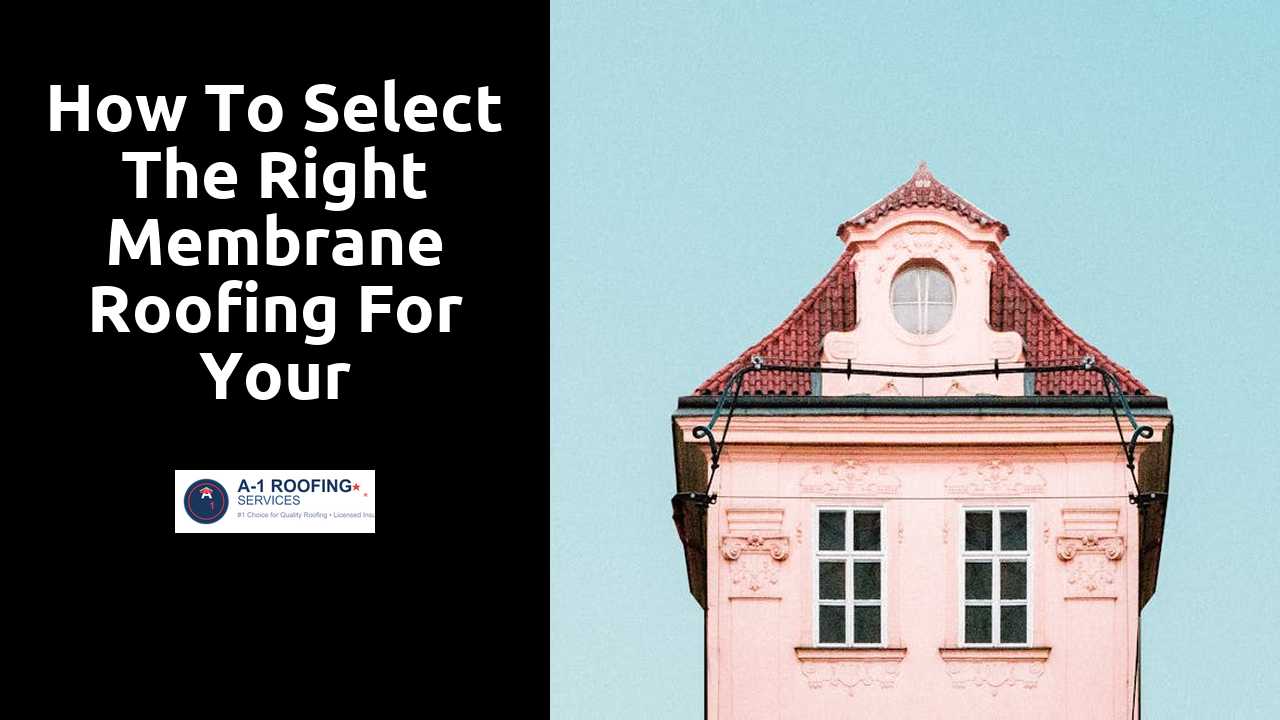
How to Select the Right Membrane Roofing for Your Commercial Needs
Table Of Contents
Energy Efficiency of Membrane Roofing
Membrane roofing systems are designed with energy efficiency in mind, providing significant advantages for commercial buildings. These roofs often utilize reflective materials that minimize heat absorption. By reflecting sunlight, they help maintain cooler indoor temperatures and reduce the reliance on air conditioning. This efficiency can lead to substantial energy savings over time, making it a smart investment for property owners.
In addition to minimizing energy consumption, membrane roofing can contribute to sustainable building practices. Many modern membranes are made from recyclable materials, which lessens the environmental impact of construction and disposal. Their durability also means they require fewer repairs and replacements, further supporting eco-friendly goals. As businesses increasingly prioritize sustainability, the energy efficiency and longevity of membrane roofing systems become essential factors to consider.
Discover more here.
Cool Roof Options and Benefits
Cool roofs come in various materials, including reflective membranes, tiles, and coatings. These options are designed to reflect more sunlight and absorb less heat compared to standard roofing. The lighter colors in these materials contribute significantly to energy savings, particularly in hot climates. Many businesses benefit from reduced cooling costs during warmer months, making the initial investment more appealing.
Several cool roof products also offer additional benefits, such as extended lifespan and reduced maintenance needs. They help improve indoor comfort by maintaining lower temperatures, which can contribute positively to employee productivity. Furthermore, some cool roofing options qualify for green building certifications, appealing to sustainability-focused companies. Choosing these roofing systems can enhance a commercial property's reputation while promoting energy efficiency.
Installation Process of Membrane Roofing
The installation of membrane roofing begins with careful preparation of the substrate. This process involves cleaning the surface to remove any debris or contaminants that may interfere with adherence. Ensuring that the substrate is level and secure is crucial for the long-term performance of the roofing system. Once the preparation is complete, the membrane material is rolled out and positioned correctly. Depending on the specific type of membrane, various attachment methods such as mechanical fasteners, adhesives, or ballasting may be utilized.
After the membrane is installed, the seams and edges must be sealed properly to prevent leaks. This involves heat-welding or using adhesive, depending on the material specifications. Conducting a thorough inspection is also essential. Inspectors typically look for any gaps, wrinkles, or areas that require additional sealing. The installation process may vary slightly based on the type of membrane chosen, but following the manufacturer’s guidelines is important to ensure optimal performance and durability. Proper installation not only enhances the roof's longevity but also contributes to energy efficiency.
Choosing the Right Contractor
Finding a reliable contractor for membrane roofing requires careful consideration. Start by seeking recommendations from colleagues or industry peers who have undergone similar projects. Research potential candidates by reviewing their portfolios, client testimonials, and completion timelines. Ensure that the contractor has experience specifically with membrane roofing systems, as this specialized knowledge can significantly impact the quality of installation. Verify their credentials, including licenses, insurance, and bonding, to protect yourself from potential liabilities.
Once you've shortlisted a few candidates, schedule consultations to discuss your project in detail. Pay attention to their responsiveness and willingness to address your questions. A reliable contractor will provide a transparent estimate outlining the scope of work, materials, and timeline. Assess their communication style; effective communication is essential for a smooth installation process. Additionally, inquire about their approach to warranties and post-installation support, as these factors can influence the longevity and performance of your membrane roofing system.
Common Applications of Membrane Roofing
Membrane roofing is often utilized in various commercial settings due to its durability and performance. Industrial facilities frequently adopt this roofing system for its ability to withstand harsh weather conditions and resist chemicals. The seamless nature of membrane roofing minimizes leaks and damage, making it well-suited for manufacturing plants and warehouses. Retail spaces also benefit from these roofing solutions, as they provide aesthetic flexibility along with energy efficiency. Many store owners prefer membranes that complement their building's architecture while offering long-lasting protection.
Application extends to schools and healthcare facilities where white and reflective membranes reduce heat absorption. This contributes to energy savings while meeting strict building codes for safety and performance. Additionally, membrane roofing is popular in large commercial buildings since it allows for easy maintenance and inspection without compromising overall integrity. Each application highlights the versatility of membrane roofing, making it an attractive option for a broad range of commercial projects.
Industrial vs. Retail Spaces
Membrane roofing serves various functions across different commercial sectors. In industrial settings, durability and resistance to heavy machinery and equipment are often top priorities. Membrane systems can handle significant weight loads and provide superior waterproofing, making them ideal for warehouses and manufacturing facilities. The roofs may also include features tailored to environmental concerns, ensuring adequate drainage and energy efficiency.
In contrast, retail spaces may emphasize aesthetics alongside functionality. Membrane roofing can be designed in various colors and textures to complement the overall architecture of a storefront. This approach helps attract customers while still providing the necessary protection against the elements. Additionally, retailers might prioritize energy-efficient options to reduce operational costs, leading them to consider reflective membranes that lower cooling expenses.
Related Links
Pros and Cons of Standing Seam Metal Roofing for BusinessesChoosing Spray Foam Roofing for Energy Efficiency in Commercial Spaces